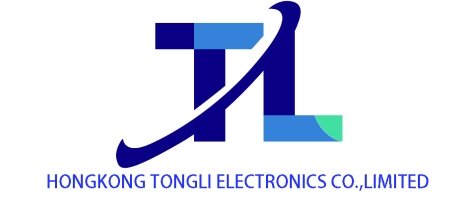Turbulence in the Storage Industry: Stock Volatility, Capacity Adjustments, and Technological Iteration Reshape Market Dynamics
Cooling Market Expectations Pressure Leading Stocks
Leading storage industry players have recently faced a stock price downturn. Micron’s stock price plummeted by 4.75% in a single day due to analysts’ bearish outlook on the second-half storage market, closing at 118.61, its lowest closing level since June 13, and leading the decline among the 30 components of the Philadelphia Semiconductor Index. Its competitor SanDisk saw an even steeper drop of 7.83%, closing at 42.48, a new low since June 12.
Edgewater Research stated in a research report that storage demand and pricing performed relatively well in the first half of 2025, but demand and pricing in the second half are feared to fall short of historical seasonal averages and may weaken further. This expectation directly impacted market confidence, weighing on the stock prices of related companies.
Accelerated Capacity Layout Adjustments: Rise of Korean Factories and Decline of Wuxi Plant's Share
SK Hynix’s capacity layout is undergoing significant changes. Its M16 factory in Icheon, Gyeonggi-do, South Korea, has rapidly expanded production capacity. As of the third quarter of this year, the average monthly wafer input volume reached 170,000 units, a 70% increase from the same period last year and a 2-3 fold increase from the first quarter of last year. It has surpassed the monthly output of China’s Wuxi plant (160,000-170,000 units), becoming a key pillar of South Korea’s DRAM production and replacing the previous M14 factory.
With the full commissioning of the M15X factory next year, the share of Wuxi plant in SK Hynix’s total DRAM output is expected to drop to around 30%, while the proportion of production in South Korea will increase significantly. Currently, South Korea’s domestic DRAM output has reached approximately 1 million wafers, accounting for more than two-thirds of the total DRAM output (about 1.5 million wafers).
Behind the capacity adjustment lie hidden concerns. Potential U.S. restrictions on imports of 10nm-class DRAM equipment, uncertainties surrounding “Validated End-User” (VEU) approvals, and China’s control over EUV equipment imports have led to delays in equipment replacement and maintenance at the Wuxi plant and inefficiencies in DRAM production processes, stagnating its capacity growth. Meanwhile, SK Hynix continues to increase investment in Icheon factories to boost HBM production.
DDR4 Price Surge and Generational Inversion: Mixed Fortunes for Module Manufacturers
The DDR4 market has shown a “tale of two extremes”. Since the second quarter of 2025, DDR4 spot prices have doubled rapidly, with an increase of nearly 100% in the past three months. Although contract prices have lagged, they are expected to rise by more than 40% in the third quarter. This upward trend has significantly benefited module manufacturers with large inventories of low-cost products, driving collective revenue growth among the top four module makers.
ADATA’s second-quarter revenue reached 12.8 billion, a 29% quarter-on-quarter increase and a 15-year single-quarter high; Team Group’s June revenue surged 85.97% month-on-month; Transcend and Apacer’s first-half cumulative revenues both saw year-on-year growth exceeding 20%, hitting multi-year highs. As of the end of the first quarter, Transcend’s inventory turnover days stood at 226, ADATA at 149, and Apacer and Team Group at 2-3 months. Low-cost inventories have transformed into profit advantages during the price cycle.
However, concerns are emerging amid the prosperity. Recently, the upward momentum of DDR4 spot prices has slowed, and some customers have expressed difficulty accepting the high price increases. More notably, DDR4 prices have surpassed DDR5, showing a significant generational price inversion. Historical data indicates that such inversions typically last for more than a year. Future price trends will depend on original manufacturers’ capacity strategies and the speed of downstream migration to DDR5. The sustained demand for DDR4 in industrial control and industrial PC sectors (expected to last 2-3 years) may support its price resilience.
HBM4 Technological Iteration Hits Snags: Extended Testing Cycle Draws Industry Attention
HBM (High Bandwidth Memory), a “new track” in the storage industry, has encountered setbacks in its technological iteration. The HBM4 samples supplied by SK Hynix to customers in March this year are early versions that require multi-stage optimization, and the qualification testing time is expected to exceed the 7-month cycle of HBM3E.
Technical complexity is the main reason: HBM4 has 2048 IO terminals, twice that of HBM3E, and logic chips are produced using TSMC’s advanced processes for the first time, significantly increasing installation and testing time. Meanwhile, Samsung is fully committed to HBM4 sample production, planning to apply 10nm-class 6th-generation DRAM; Micron has also followed up with samples, and technological competition among the three giants is intensifying.
Niche Markets Emerge as New Growth Drivers: Linghang Technology's Listing Highlights Differentiated Opportunities
Linghang Technology, focusing on niche storage markets, recently listed, and its development path reflects opportunities in industry segments. The company focuses on niche areas such as overclocking for e-sports, industrial control, and AI edge computing, providing customized module solutions. In 2024, the shares of system integration and bidding, e-sports and brand, and industrial control markets were 47%, 46%, and 7% respectively, with a balanced revenue structure.
On the product side, DRAM accounts for 68% (with DDR5 exceeding 55%) and NAND Flash for 31%, enabling flexible response to price fluctuations. Benefiting from original manufacturers’ focus on HBM and DDR5 production and the gradual discontinuation of DDR4 leading to tight supply and demand, Linghang’s third-quarter orders are nearly full, and it has started negotiating fourth-quarter orders, with expectations of better second-half operations than the first half. In 2024, the company’s revenue reached 5.508 billion yuan, with earnings per share of 2.37 yuan.
Overall, the storage industry is in a critical period of adjusted market expectations, reshaped capacity patterns, and intensive technological iteration. Companies need to navigate short-term price fluctuations while seizing long-term opportunities in technological upgrading and niche markets.
